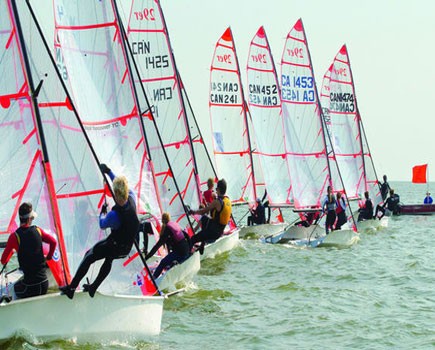Business name : Gimli Yacht Club
Gimli Yacht Club owes its beginnings to a unique set of circumstances. In 1967 Winnipeg was chosen as the site for the Pan Am Games and the most suitable location for the yachting competition was Gimli. Even before the Games were held, negotiations were initiated by the Manitoba Sailing Association regarding the acquisition of the site. However, the property was turned over to the Town following the Games. After two more years of negotiations between MSA and the Town, Gimli Yacht Club became a reality in July, 1969, when its first organizational meeting was held.
Unlike most yacht clubs, GYC started out well equipped with a building (donated to the Pan Am Games by Camp Shilo), land (leased from the Town) and a wharf and finger docks (build by the Pan Am Games Society), but only a handful of members. Until the airforce base at the airport closed in 1971, the CFB Sailing Club was an important member of this group in its first few years, providing some of the basic necessities, such as furniture, boats and rescue craft.
From the handful of original members, GYC has mushroomed in the decades since the inaugural meeting to a membership now in the hundreds. The Pan Am Games proved the suitability of Gimli and Lake Winnipeg for sailing. Located only 60 miles from Winnipeg and having a well-developed harbour and other facilities, such as the Recreation Center , a trailer park and camp ground, several hotels and motels, and many retail outlets, Gimli provides many advantages for competitive and casual sailors.
When the club was established 34 years ago, dinghy sailors were in the majority, with only a few cruising boats. The often rough conditions of the lake demanded a rugged, stable type of boats, and the Albacore met this requirement. The first of the club boats were acquired from the Manitoba Sailing Center and were used for many years for training until they were replaced with the current fleet of Tumbleweeds, a fiberglass version of the popular Mirror dinghy. Currently, a majority of the members own keelboats although there is still a hard core of dinghy sailors. This change in membership has come about since the modifications to the harbour mouth in 1983-84 that prevented swells from entering the harbour during southeast gales. With the reputation as a safe harbour and the installation of the crane in 1984 has come a large and active keelboat fleet.



